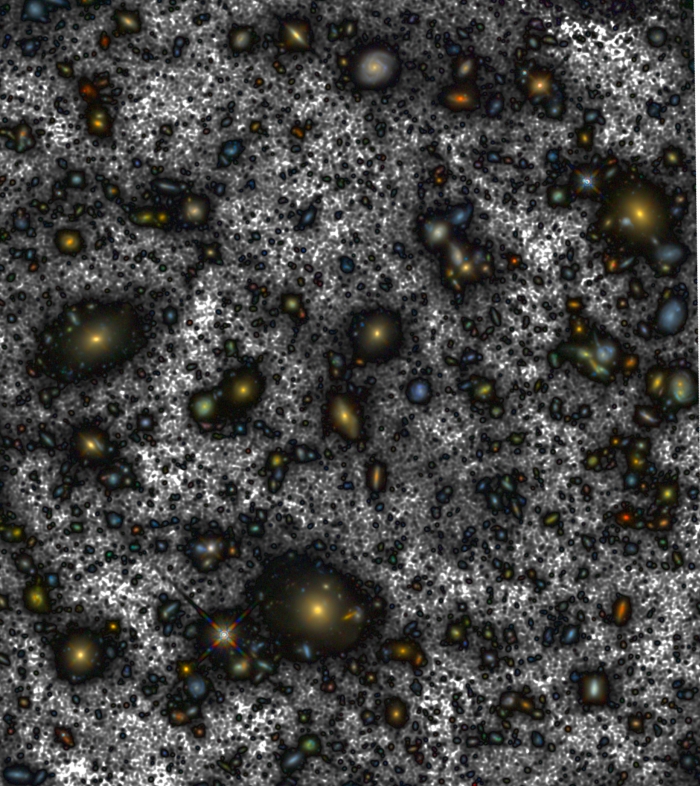A few years
ago, the Hubble Space Telescope did something amazing: over the course of 841
orbits and hundreds of exposures, it imaged a tiny region of space in the
constellation of Fornax, peeling back the layers of time by 13 billion years,
to just a few hundred million years after the Big Bang.
It's called
the Hubble Ultra-Deep Field 2014 (HUDF), and it's one of the most breathtaking
mosaics the telescope has produced. In it, around 10,000 galaxies gleam - a
feast for astronomers exploring the early Universe.
Now a team
of astronomers has made the image even better. Over the course of three years,
scientists at the Instituto de Astrofísica de Canarias (IAC) developed and
applied an image processing technique designed to draw out the unseen light in
the HUDF.
They called
this complex technique ABYSS, and with it they have recovered the dim light
from the outer edges of the largest galaxies in the image.
"What
we have done," explained IAC astrophysicist Alejandro S. Borlaff, "is
to go back to the archive of the original images, directly as observed by the
HST, and improve the process of combination, aiming at the best image quality
not only for the more distant smaller galaxies but also for the extended
regions of the largest galaxies."
So far, the
results have revealed that at least some of these galaxies are much bigger than
thought, with diameters up to twice as large as previous estimates.
But the
paper published by the team wasn't for the purpose of making these discoveries,
but describing how ABYSS works.
The have
published the enhanced images they generated, and have plans to publish the
calibration files and the ABYSS pipeline so that the community can use the
tools themselves, and help develop further refinements.
The paper
has been published in the journal Astronomy & Astrophysics, and can be
downloaded in full from preprint resource arXiv.

Comments
Post a Comment